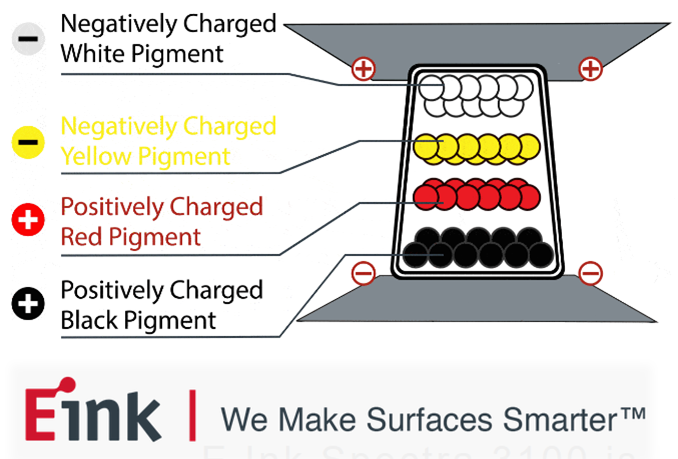Understanding the Difference Between E Ink and LCD Screens – and Why You Might See Spots on E Ink Devices.
When it comes to display technologies, E Ink (electronic ink) and LCD (liquid crystal display) screens are fundamentally different—not just in how they look, but also in how they work and what they’re best suited for.
How E Ink Works:
E Ink displays are made by sandwiching millions of microcapsules filled with pigmented particles (typically black and white) between two layers. Each microcapsule contains positively charged white particles and negatively charged black particles suspended in a clear fluid. When an electric field is applied, the particles move to the top or bottom of the capsule, rendering a pixel either black or white. This unique structure allows the screen to retain an image without continuous power—unlike LCDs.
- Top Layer: Transparent, to allow ambient light to reflect off the pigment.
- Bottom Layer: Contains electrodes that send electric charges to reposition the ink particles.
- No Backlight Needed: E Ink is reflective, meaning it mimics the appearance of ink on paper, reducing eye strain and glare in bright environments.

How LCD Works:
LCD screens, on the other hand, use a backlight and liquid crystals to create images. Pixels are controlled by tiny transistors that modulate light passing through colored filters. This allows for bright, vibrant visuals—ideal for video playback and interactive applications—but at the cost of higher power consumption and eye fatigue during prolonged reading.
Why You Might See Black/White Spots on E Ink Displays:
Due to the nature of E Ink technology, some minor imperfections such as small black or white spots can occur on the screen. These are often due to microcapsules that fail to fully respond to electrical charges or physical pressure applied during manufacturing or usage. This is not considered a malfunction but rather a known limitation within industry-accepted tolerances.
Industry Standards on E Ink Pixel Defects:
Manufacturers of E Ink displays follow quality control standards similar to those in the LCD industry. For example:
- A small number of stuck or dead pixels (black or white dots) is considered acceptable if they fall within specified zones and quantities.
- A typical threshold is no more than 3-5 visible defects per million pixels, and location (e.g., center vs. edges) is factored into acceptability.
These standards are meant to balance realistic manufacturing capabilities with product usability.
Accepted Display Tolerances (per manufacturer standards):
| Spot Type | Spot Size (Diameter) | Zone A (Center) | Zone B & C (Edges) |
|---|---|---|---|
| White Pattern | ≤ 0.1 mm | Ignore | Ignore |
| 0.1 mm < D ≤ 0.15 mm | Max 4 spots | Ignore | |
| > 0.15 mm | Not Allowed | Not Allowed | |
| Black Pattern | ≤ 0.1 mm | Ignore | Ignore |
| 0.1 mm < D ≤ 0.25 mm | Max 10 spots | Ignore | |
| > 0.25 mm | Not Allowed | Not Allowed |
Conclusion:
E Ink technology is revolutionary for readers, notetakers, and minimalist tech users—offering ultra-low power consumption and a paper-like reading experience. While it has limitations like slower refresh rates and occasional pixel defects, these are trade-offs many are happy to accept for the comfort and clarity it offers.
Further Reading: